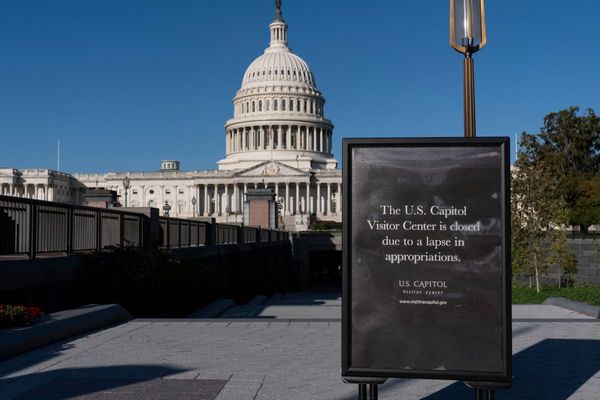
Robert Moog: synthesiser pioneer
As a student in the 1950s, New York-born scientist and engineer Robert Moog was manufacturing and selling theremin kits. But it was his friendship with composer Herbert Deutsch that led Moog to start experimenting with voltage control, leading to the creation of a prototype synth with keyboard. After a fruitless attempt to interest Hollywood, Moog’s associates demonstrated the Moog synthesiser in a booth at 1967’s Monterey International Pop Festival, and soon the instrument’s cosmic tones were finding their way on to albums like Simon and Garfunkel’s Bookends and The Beatles’ Abbey Road. In 1970, Moog released the Minimoog – one of the first portable, mass-market synthesisers. A documentary film about the inventor, Moog, was released in 2004.
Les Paul: electric guitar innovator
Lester Polsfuss was still in his teens when he hit on his first invention. A country music guitarist who made his living playing and singing at roadhouses and drive-in restaurants around Waukesha, to make his music heard above the hubbub he inserted a phonograph needle into his acoustic guitar and wired it to a radio speaker to create a basic amplifier. Later, he created “The Log”, a primitive electric guitar made using an Epiphone hollow body, a length of 4x4 lumber and some homemade pickups. Even after Gibson named a guitar in his honour, Paul continued to use his own homemade creations. Fascinated by technology, he also experimented in the field of overdubbing, tape delay and multitrack recording.
Shawn Fanning: founder of Napster
In June 1999, Shawn Fanning, a student at Northeastern University in Massachusetts, launched a preliminary beta of his new computer program Napster – and turned the music industry upside down. A peer-to-peer file-sharing service, Napster allowed for the fast sharing of music MP3s between private computers, via a decentralised network. This was bad news for record labels and copyright owners, who forced the closure of Napster in 2001 – but other services like Kazaa and The Pirate Bay sprung up to replace it, and by 2004 an estimated 70 million people were participating in online file sharing.
Nobutoshi Kihara: inventor of the Walkman
In 1978, Sony co-founder Masaru Ibuka approached the company’s audio-visual division with the request they develop him a portable tape player, in order that he could listen to his favourite opera cassettes on transatlantic journeys. Engineer Nobutoshi Kihara came back with a pocket-sized device, which was packaged with miniature lightweight headphones and manufactured as the Walkman in 1979. The product introduced the idea of portable, personalised listening to the music marketplace – and by the mid-80s, cassettes were outselling vinyl for the first time.

David Edward Hughes: inventor of the microphone
Such was the pace of innovation in the late 19th century that the source of many inventions is disputed. Both Emile Berliner and Thomas Edison experimented with early amplification technology – but it’s a Brit, David Edward Hughes, who is commonly credited with creating the microphone as we know it. Hughes’ microphone made use of loose-packed carbon granules, which are disturbed by pressure exerted by a sound diaphragm, creating a relatively accurate electrical reproduction of the sound signal. He demonstrated his apparatus to the Royal Society by magnifying the sound of insects scratching through a sound box.
Harry Chamberlin: inventor of the sampler
The sampler is a crucial part of the modern music toolkit – so it’s slightly surprising to learn the earliest sampler was built way back in 1946. While later sampling technology made use of a memory chip, the Chamberlin keyboard – invented by Wisconsin native Harry Chamberlin – made use of several eight-inch reels of magnetic tape, which could be played back using a piano-style keyboard. The Chamberlin never entered the mass market, with only 700 or so units making it into production – although you can hear them on records by David Bowie, Beck and XTC – but the keyboard’s basic principles would find their way into later instruments such as the Mellotron and the Fairlight.
Famous for a reason
What do all these people have in common? Their inventions and innovations changed music. In other words, they are famous for a reason. The Famous Grouse’s reputation is also built upon this ethos. Created in 1896, the founder Matthew Gloag didn’t want to be famous, he simply wanted to make the best whisky he could possibly make so he created The Grouse Brand. It soon became so popular that it was renamed The Famous Grouse. Renowned for its quality, craftsmanship and exceptional taste, The Famous Grouse is available in four expressions, including the smooth The Famous Grouse Mellow Gold and the distinctive The Famous Grouse Smoky Black.
Please enjoy The Famous Grouse whisky responsibly.








